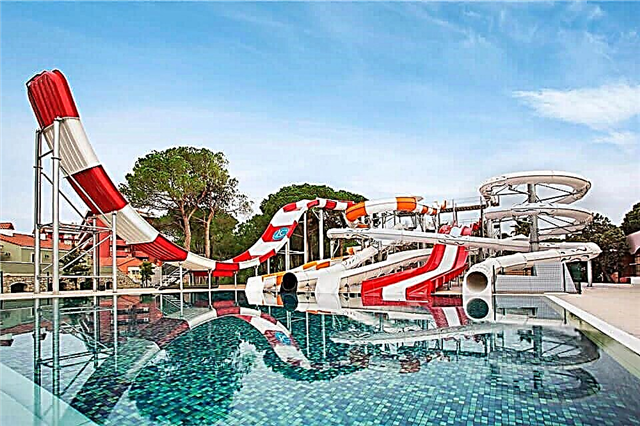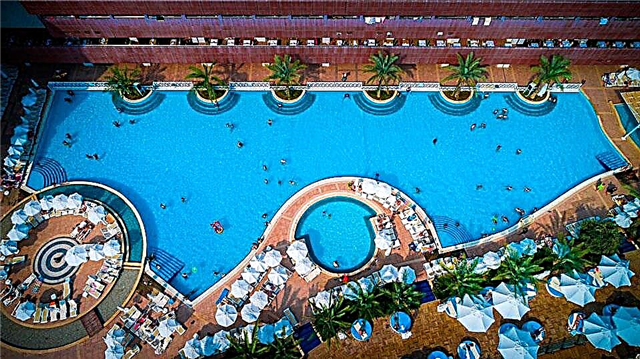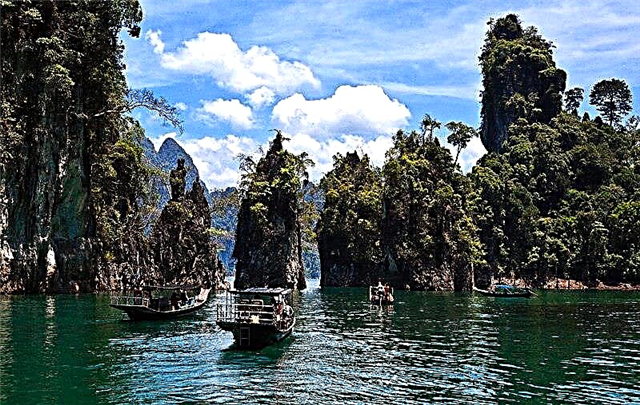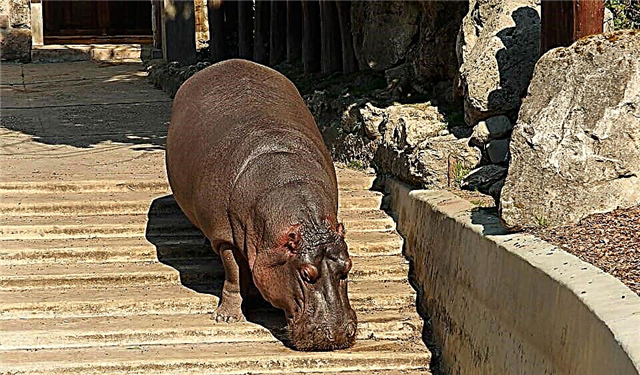On the banks of the great Danube River lies the city of Budapest - the capital of Hungary. Thousands of tourists annually visit this ancient unique city, which is fraught with the secrets of bygone eras. Not only the modern capital of Europe, but also the city, the spirit of which is reflected in the green domes of cathedrals and churches, the ancient narrow streets, and, of course, the famous theaters and museums of the city, appears before the traveler's fresh eyes. If you don’t know what to see, then our overview of the most interesting places will help you plan your route. A large part of the city is included in the UNESCO World Heritage List, these are the central districts of the city overlooking the Danube, Andrasshi Avenue, and the Buda Fortress. Let's talk about the most interesting sights of Budapest.
Andrássy Avenue
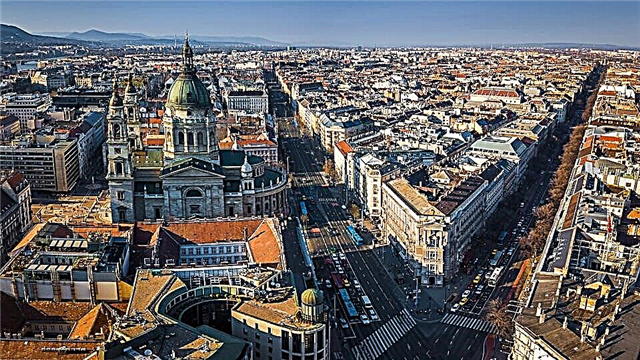
The location of the avenue is the city center. The Opera House is considered the key building of the avenue, like many others here, it is made in the neo-Renaissance style. The theater was built at the end of the twelfth century, today it has survived almost in its original form, it is considered the most beautiful building in the world. The special acoustic features of the inner hall and the unusual shape of the hall, reminiscent of a horseshoe, should be noted.
There are several palaces on the avenue, the most famous of which is the Drexler Palace, the squares of Oktogon, Mora Jokai and Ferenc Liszt, museums - the Zoltan Kodai House-Museum, the Museum of Far Eastern Art, the Museum of Terror, as well as a puppet theater and the building of the University of Fine Arts. Each building here deserves special attention, so take the time and spend a few days exploring the historical masterpieces of Andrássy Avenue.
Buda embankment
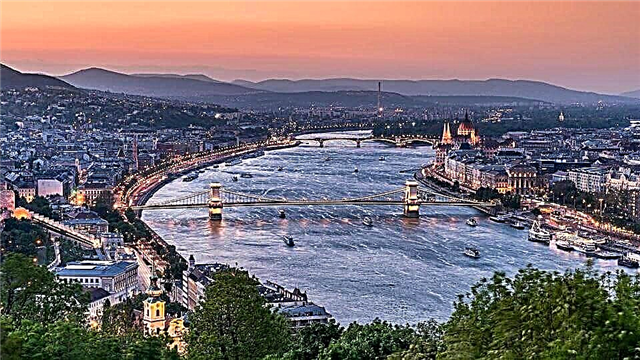
Two parts of the city - Buda and Pest - are separated by the handsome Danube. The embankment of the river is the best place for walking, it has been recognized by UNESCO as part of the World Heritage for over a hundred years. The charm of the embankment has won the love of not only locals, but also tourists. Unfortunately, after the Second World War, its appearance completely changed, as the city was practically destroyed by massive bombing. All buildings facing the embankment have been rebuilt.
This amazing place has many faces. There are places where car traffic is very strong, and there are also completely pedestrian areas. Many small cafes will allow you to fully immerse yourself in the local flavor, but you can also find secluded places. The most beautiful part of the embankment is located between two bridges - Erzhebet and Szechenyi. But travelers who want to see iconic places should go a little further behind the Szechenyi Bridge.
There you can see the "Little Princess" - a sculpture of a mischievous girl with a crown. The entrance to the bridge is guarded by majestic lions. There is a funny local legend about them - the animals will emit a loud roar if a man passes between them, who has never cheated on his wife and never thought about it. But there is also a tragic place - this is the monument "Shoes on the Embankment", located in the place where the Nazis executed Jews during the Holocaust.
Danube embankment shoes

On the Danube embankment, there is one of the most piercing monuments dedicated to the memory of the victims of the Holocaust. The sculptural composition is cast-iron 60 pairs of shoes randomly placed at the very edge of the water. These are men's, women's and children's shoes worn down to holes. The memorial was created in 2005. The artist managed to create a simple unique statue that can move the viewer to the depths of his soul and make him realize the depth of the tragedy of humanity in the 20th century.
During World War II, the Nazis staged a mass, cynical execution of Hungarian Jews on the banks of the Danube. Before they died, people were forced to take off their shoes. Innocent victims of fascism were chained up in large groups. The shot was fired at one person, who, falling into the river, pulled the remaining executed with him.
Buda fortress
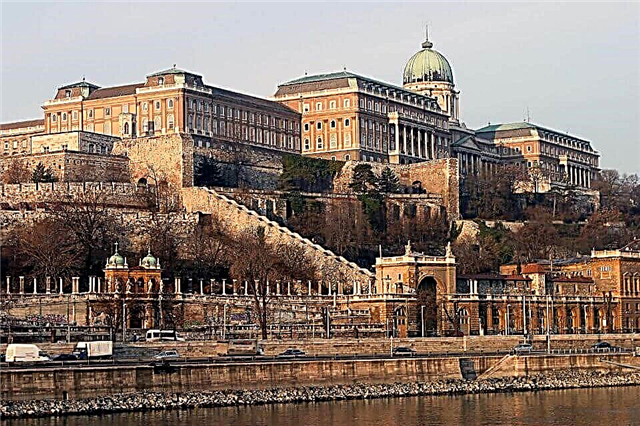
This is not just a citadel, but a real city within a city. It will take a whole day for a leisurely and careful examination. After tourists pass through the gates in the fortress wall, a whole range of interesting sights opens up to their eyes.
On the territory of the fortress there is a royal palace, which was the residence of the country's rulers. Construction began in 1265 and was built in the Gothic style. Over the next centuries, the kings have repeatedly rebuilt, supplemented and restored their possessions, resulting in several buildings connected by terraces, courtyards and passages. Now these premises are occupied by the National Gallery, the "Castle Museum", the National Library, as well as some government agencies.
A little below, there are extensive royal gardens, decorated from the side of the embankment with the Bazaar. It is a long arcade with various pavilions and galleries. In the southern part, the Bulava tower rises, the Main Bastion and the Great Gate tower are located. Bastion, or as the townspeople call it, Rondella is a large defensive structure, the walls of which reach a thickness of 5 meters.
Hungarian National Museum
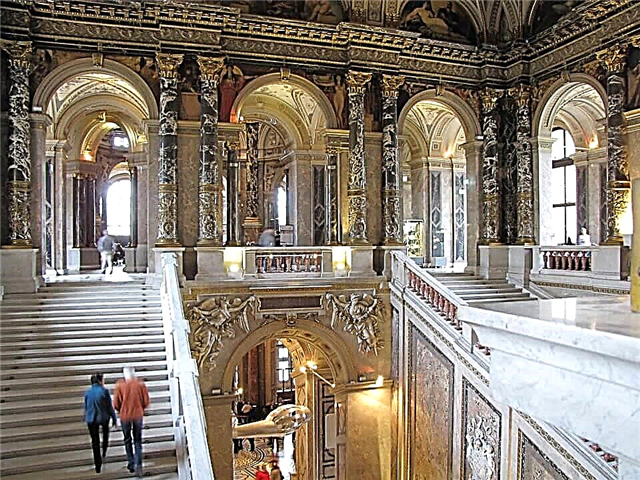
The main museum of the country clearly demonstrates all the historical stages of Hungary. Surprisingly, the museum was founded relatively recently - in 1802. It grew out of the personal collection of an influential person - Count Széchenyi, who collected interesting exhibits for many years and then donated them to the state.
To house the entire exhibition, the city authorities built a magnificent building resembling a palace. The majestic neoclassical style of the building has added even more charm to the city. Permanent exhibitions are located on three floors, introducing visitors to the history of Hungary. The Lapidarium will tell you about the Stone Age period.
There are sarcophagi, figurines, exhibits from the era of Roman rule. Four more exhibitions showcase unique items from different eras. A separate room is dedicated to just one exhibit. Here is kept a magnificent mantle, in which the famous ruler of Hungary, Istvan, who was later canonized, ascended the throne. The robe is made of Byzantine silk, richly decorated with embroidery with gold threads and pearls. Another hall introduces visitors to contemporary art.
Art Museum
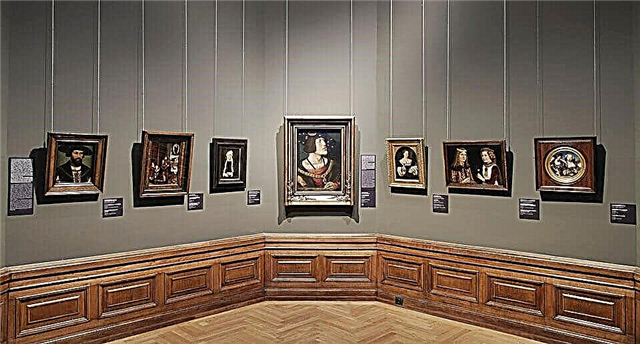
This is the largest art collection in the country. Here are the masterpieces of foreign masters. Founded in 1896. The doors for visitors did not open until ten years later. A separate building was built specifically for this meeting, located on Heroes' Square, which was designed by Albert Schikedanz and Fülöp Herzog. Six large sections of the main exhibition introduce visitors to the greatest masterpieces of different eras. The ancient Egyptian collection was founded by the famous Egyptologist Eduard Mahler.
The collection of antique works of art, ancient sculptures, works made in the graphic technique invariably attract the attention of connoisseurs. The complex is justly proud to have drawings by Rembrandt, Goya, Leonardo. The paintings of romantics and impressionists are widely represented. The gallery of old masters is very interesting. The museum has been reconstructed several times. The greatest damage was done during the Second World War, when the second floor was destroyed and many works of art were lost. The last large-scale restoration was carried out quite recently - in 2018.
Hungarian National Gallery

The Royal Palace in the Buda Castle has become the focus of Hungarian art.It is there that the largest collection of works by talented artists of this country is located in the country. The gallery was founded in 1957, and over the past decades, the exhibition has more than 100 thousand masterpieces. The oldest exhibits date back to the Middle Ages.
The first floor of the gallery is dedicated to Gothic and Baroque, while the second houses a collection of contemporary paintings and sculptures. The work of Tivadar Kostka, who is now considered a national pride, deserves special mention. During his lifetime, he could not sell a single work and was not recognized at home, but he successfully exhibited his paintings in various European cities. Especially interesting is his work "The Old Fisherman", which shows the duality of human nature.
The gallery was once part of the Museum of Fine Arts, but as the number of exhibits grew, it was decided that Hungarian art deserved a separate building. Visiting the National Gallery, you can enjoy not only works of genius. Climbing to the very top of the building, visitors get to the observation deck, from which a delightful view of the city opens.
Ethnographic Museum of Hungary
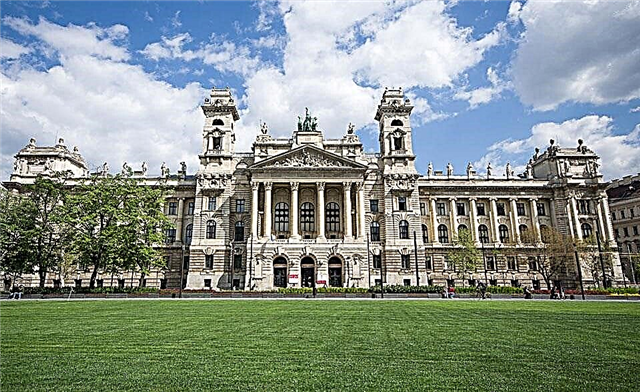
This science began to actively develop in the country in the second half of the 19th century. The political refugee Janos Xantush was forced to live in the United States for some time, where he began to collect a collection of interesting objects. After returning to his homeland, the Minister of Education became interested in his work. He contributed to the opening of a special museum that housed ethnographic exhibits.
More than 200 thousand different objects clearly show the history of mankind from primitive society to the present day. These are jewelry, colorful national clothes, tools, furniture, icons, musical instruments and much more. Here you can see not only exhibits telling about the history of Hungary, but also evidence of the life of other peoples.
There are also unusual exhibitions. For example, one of them is about smuggling. Confiscated items from different eras invariably cause surprise and interest of visitors. The building where the museum is located is also noteworthy. It is located in Lajos Kossuth Square, previously it housed the Palace of Justice. The museum building is a work of art in itself. It is decorated with statues, stained glass windows and two towers.
Széchenyi Bath
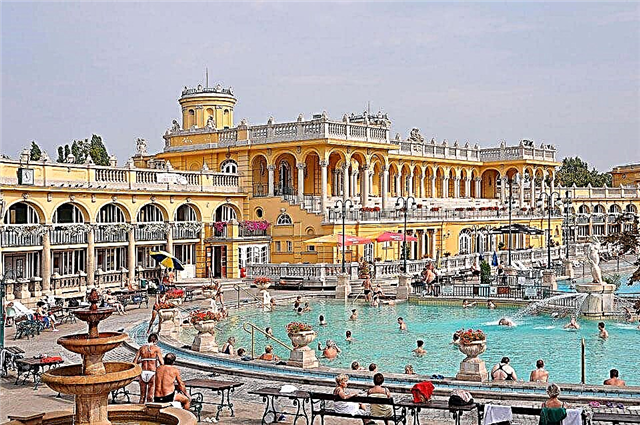
Budapest is a truly unique city from a scientific point of view; over a hundred thermal springs are concentrated in a small area. The Széchenyi Baths, the largest complex in all of Europe, are rightfully considered the pride of the entire Hungarian nation. There are eleven therapeutic pools and three saunas in the baths.
A distinctive feature of the pools is their water, which flows from thermal springs located deep underground. The temperature here at any time of the year is kept at 27 degrees. In addition, there are therapeutic mud baths and salt rooms. Guests can not only improve their health, but also enjoy the stunning surrounding views. Bathing hours: daily from 6 am to 10 pm.
Bath Lukac
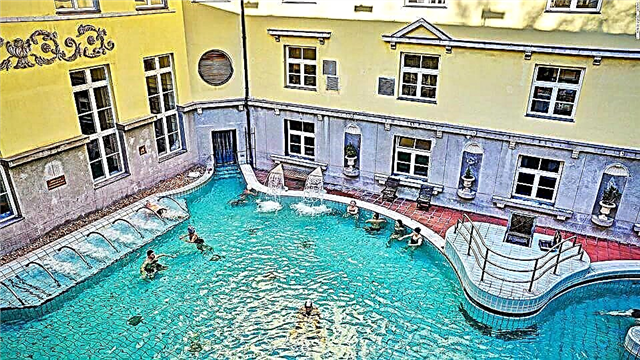
The city pleases its guests not only with wonderful views and museums, but also with the opportunity to improve their health. You can fully relax, enjoy and improve your health in the Lukac baths. The springs that the bathing house feeds on have been known for a long time. Back in the 12th century, people knew about the healing properties of this water. Knights belonging to the Order of the Hospitallers healed various ailments here. When Hungary was subordinated to the Turks, the bath was the favorite resting place of the Turkish pasha. Already in 1937, a pavilion for drinking medicinal water was built here, and a full-fledged hydropathic establishment was opened in 1979.
Now the complex includes 7 swimming pools, of which two are open. Some pools have their own specialization - entertainment, massage, gymnastics. There are saunas and steam rooms, after which you can plunge into an ice plunge pool, massage rooms and mud wraps. Those who wish can visit the salt room. The visit is interestingly organized - there are separate days for men and for women. But on some days the bathhouse can be visited together.
Gellert Bath

The city is rightfully proud of its thirteen baths. One of the most luxurious is the Gellert Bath. It is located in the building of the hotel of the same name. The four-storey building, built in the luxurious Art Nouveau style, the facade of which attracts attention with beautiful stucco molding, surprises with the interior interior. The medicinal bath was opened here in 1918.
Visitors may well feel like royalty - marble columns, stained glass windows, wonderful mosaic inserts, sculptures surround guests everywhere. Here, health-improving procedures seem to be combined with an excursion. Tradition claims that Saint Stephen was one of the first to appreciate the healing water in the 8th-9th centuries. Since then, local waters have been gaining popularity.
For a long time, they were available only to people of noble birth, but later the bathhouse opened its doors to everyone. Thirteen pools of seven different types, carbon dioxide and pearl baths, healing mud treatment, a salt room, various types of massage - all this makes the bath very attractive for both city dwellers and tourists. On the roof of the building there is a sun terrace where sunbathers can sunbathe.
Skip-the-line: Széchenyi baths full day - 20 €
Classic, Premium or Deluxe hop-on hop-off bus - 27 €
Full day at the Gellért Spa center without queues - 21.5 €
2-hour Danube cruise with live music - 46 €
Danube cruise with candlelight dinner - 70.65 €
Organ music concert at St. Stephen's Basilica - 20 €
Margaret Island
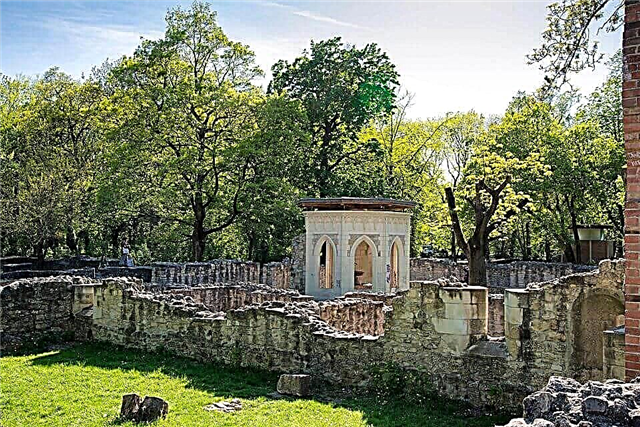
In the center of Hungary's main river - the Danube, there is a nature reserve - Margaret Island, which can rightfully be called one of the central attractions of the capital. It is this quiet and cozy corner of the city that many residents of the capital have chosen as a place for a weekend getaway. Recently, a lot of entertainment has been built on the island, these are tennis courts, sports grounds, and drinking establishments. On the beaches of the island, theater performances are held every weekend for residents and guests of the city.
In order to enjoy the panorama of the city, the traveler is simply obliged to climb Mount Gellert. From here a beautiful view opens not only of the old buildings of the city, but also of the Danube waters. There are several architectural monuments at the top of the mountain: the Citadel, the Freedom Monument, representing a woman holding a palm branch in her hand.
Varoshliget Park
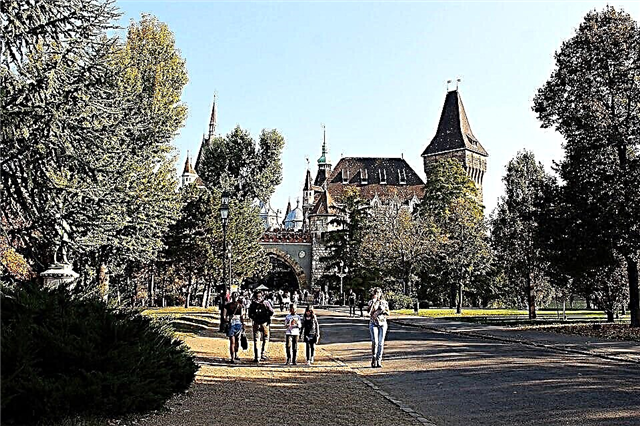
This charming green corner of the Hungarian capital is a favorite walking place for both townspeople and tourists. In the Middle Ages, there were impenetrable jungles here, and the soil was very swampy. The area was used as a hunting ground. At the end of the 18th century, a lot of efforts were made to make this place more attractive. The swamps were drained, many trees were planted, and an entire water system was developed.
Already at the beginning of the 19th century, the transformed territory was declared a city park. Now there you can not only enjoy the unity with nature, but also admire the sights. It is here that the landscape complements the austere architectural appearance of Vaidahunyad Castle. There is an old legend according to which it was here that the terrifying Vlad Tepes, known to everyone under the name of Count Dracula, languished in captivity for some time. Now this place is devoid of gloomy romanticism; an agricultural museum is located within the walls of the castle.
Opposite the castle, the charming Yakskaya chapel attracts the eye, the facade of which is decorated with sculptures depicting Christ and his disciples. Another curious attraction of the park, which not a single tourist will pass by is the monument to Anonymous. The mysterious figure with a closed face invariably attracts travelers who take pictures with her with pleasure.
Vaidahunyad Castle

Among the centuries-old trees of Varoshliget Park, an architectural masterpiece - Vaidahunyad Castle - rises above a picturesque pond. The original structure was erected in 1896 from planks and plywood. It only served as the backdrop for a historical pavilion created to celebrate the millennium of the founding of Hungary. The external appearance of the temporary building harmoniously combined such styles of architecture as Gothic, Baroque, Renaissance and Romanticism. The building, built of short-lived materials, was so loved by the locals that in 1908 a copy of it was recreated from stone.
The fortress walls of Vaidahunyad Castle are surrounded by a large moat, which brings a romantic atmosphere to the local surroundings. Passing over a wide bridge, tourists gaze at a massive Gothic gate with towers, loopholes and spiers. A unique palace complex is located on a well-groomed territory, on the facades of which you can see traces of various architectural eras. The elements of the castle decor are striking in their splendor. These are numerous bas-reliefs, sculptures, stucco moldings, openwork ornament, columns, balconies, arched window openings and graceful domes.
Hungarian parliament building

The pearl of architectural art and the hallmark of the city is the unsurpassed stately building in which the Hungarian government sits. Striking in its grandeur and beauty, the neo-Gothic palace was erected on the banks of the Danube at the end of the 19th century. The magnificent building attracts attention with its monumentality and size. Its length is 268 meters and its height is 96 meters. The facade of the Parliament building makes an indelible impression with its abundance of openwork decorative elements.
Numerous spiers, towers, carved pinnacles and triangular pediments rush upward. A massive pointed dome, vertically protruding ribs, pointed arches give the building a medieval and solemn look. On the main facade of the architectural masterpiece, you can see 88 sculptures of the kings of Hungary and Transylvania. There are 691 rooms in the Palace of the Parliament. The total area of the building is about 18 thousand square meters. The interiors are no less striking than the exterior of the building. The halls are decorated with gilded ornaments, columns and painted vaulted ceilings.
Central market
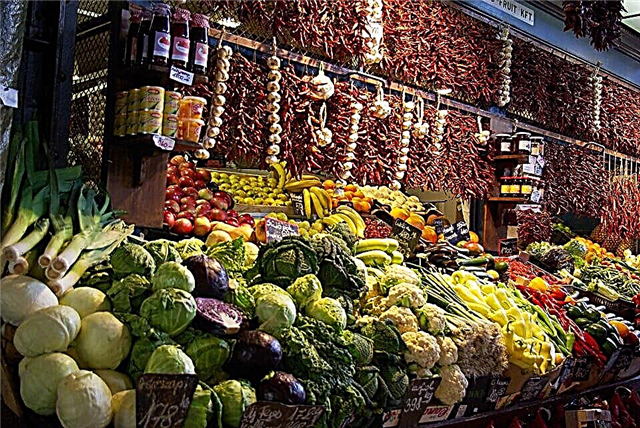
Visiting the central market can give tourists no less pleasure than seeing other sights of the city. Wide shopping arcades attract with an abundance of various products and souvenirs. The bazaar is located in a masterpiece of 19th century architecture, the project of which was created by the French architectural genius G. Eiffel. The two-storey building is covered with multi-colored tiles with high turrets. The red and yellow brick facade of the building is decorated with openwork windows and arches. The Central Market is very popular with both locals and tourists.
Here you can get acquainted with the exquisite culinary traditions of the Hungarians. The variety of meat delicacies is impressive. The main national treasure is the "Pick" salami sausage, presented in several varieties. Fruits and vegetables create a colorful picture of the market. Numerous dairy products, spices, confectionery delicacies and wines will meet the expectations of the most demanding customers. The souvenir rows of the bazaar amaze with a large assortment. Here you can buy national clothes, scarves, dishes, commemorative magnets, toys and much more.
Basilica of St. Stephen

The majestic and most significant shrine for the Hungarians is the Basilica of St. Stephen. A beautiful Catholic church can be seen from afar. Its height is 96 meters. The architectural structure was erected in 1905. The cathedral is consecrated in the name of the first king of Hungary and the founder of the state - Saint Stephen. The basilica houses a cancer with a hand, a monarch revered by the people. Admirable is the marble facade of the cathedral, decorated with various decorative elements. The monumental cruciform structure is crowned with a massive dome mounted on a drum with arched window openings and pilasters.
On both sides of the dome, two bell towers with onion domes rise symmetrically. The entrance to the church is a portico with an arch and a pediment, on which figures of various saints flaunt. The interior decoration of the church is striking in its luxury. The premises of the basilica are divided by red marble columns into three naves. The walls and vaults of the halls are faced with gilding, mosaics, as well as skillful stucco molding and woodcarving. Inside, the dome is painted with colorful images describing religious scenes of the creation of the world.
Chain bridge
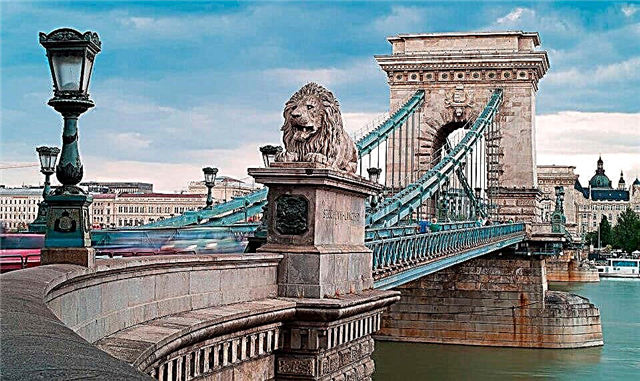
The historic districts of Buda and Pest are linked together by unique and stately bridge structures. The two banks of the Danube are connected by several grandiose works of engineering, among which the Chain Bridge deserves special attention. It is the most unsurpassed and richly decorated bridge in the Hungarian capital. Its length is 375 meters. The building was erected in 1849 with the active financing of the philanthropist - Count Istvan Szechenyi.
Triumphal arches, intricate lanterns, stone sculptures of formidable lions - all this is a fantastic sight. The roadbed of the crossing is held by massive iron chains. In 1945, the retreating Nazis blew up the bridge. It took five years to restore the legendary bridge.
Fisherman's Bastion
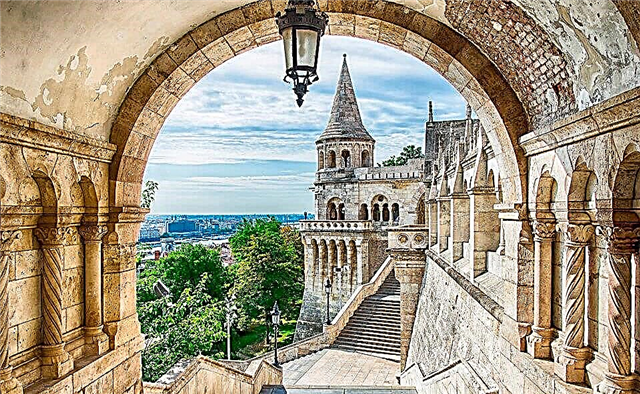
On the Fortress Hill of the Buda district, an amazingly beautiful architectural complex of white limestone structures rises. This is one of the most popular and main attractions in Budapest - Fisherman's Bastion. In the Middle Ages, on the site of a military building, the fish market was noisy and boiled with active life. The trading area was surrounded by a fortress wall. During numerous wars, fishermen defended a strategically important hilly section of the city from enemy raids. On the occasion of the millennium anniversary of the founding of the Hungarian state (in 1895), a unique ensemble of buildings was opened.
The Fisherman's Bastion is 140 meters long and consists of a wall with seven conical towers. The construction symbolizes the unification of various tribes, which served as the beginning of the emergence of Hungary's statehood. Walking along the fortification system, tourists seem to find themselves in a romantic world. The openwork arcade gallery, numerous arches, columns, narrow loopholes, carved balustrades, staircases, sculptures and terraces with open areas are pleasing to the eye.
Erwin Szabo City Library
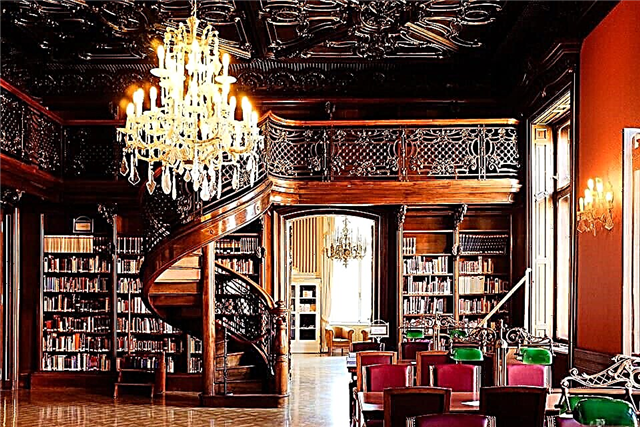
Among the abundance of luxurious architectural ensembles, monuments, basilicas and museums in the capital of Hungary, the city library of Erwin Szabo deserves attention. It is the largest book depository in the country, with a fund of more than 2 million books, documents and other materials. The institution is located in a beautiful palace that once belonged to one of the noble families of Budapest in the 19th century. The mansion, built in 1889, is an elongated rectangle in plan. The facade of the building is decorated with exquisite stucco molding and bizarre sculptural compositions.
The library, founded at the beginning of the 20th century, is named after its first director and famous politician Erwin Szabo. Tourists are attracted by the pompous interiors of the palace halls, on the squares of which shelves filled with books are placed.The walls and ceilings of the premises are decorated with bas-reliefs, gilded ornaments, and are also covered with fine wooden carvings. The marble staircases are covered with red carpets. Crystal chandeliers, massive columns, mirrors, antique furniture and panoramic windows create a favorable atmosphere for scientific creativity and reading books.
Church of St. Matiyash
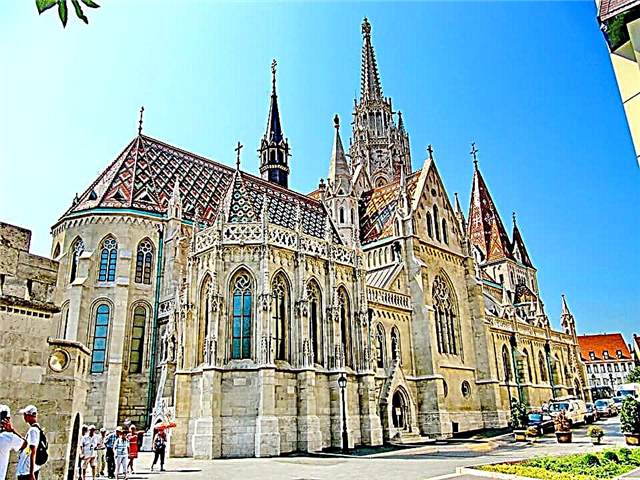
The majestic Catholic Cathedral of St. Matiyash is an architectural gem of ancient Buda. One of the best masterpieces of Gothic architecture is named after King Matiyash Hunyadi of Hungary, who was canonized by the church. The history of the temple is quite traditional, like that of many Christian shrines in Eastern Europe.
In the Middle Ages, the sanctuary was repeatedly destroyed and rebuilt again. The splendid religious building acquired its current modern look after a large-scale reconstruction at the end of the 19th century. Tourists are impressed by the abundance of Gothic elements of the church of St. Matiyash. The white-stone walls of the building, which are decorated with high windows, openwork stucco molding and protruding vertical ribs, amaze with their grace. Numerous spiers, pinnacles and towers rise up into the sky.
The bell tower, which is directed up to 80 meters into the sky, attracts attention. The temple is covered with a colored ceramic roof, which gives the Christian shrine a festive and life-affirming look. The interiors of the cathedral are decorated in solemn light colors. Colorful wall and ceiling paintings, ancient frescoes, magnificent stained-glass windows, as well as chapels with sculptures will not leave anyone indifferent to this magnificence.
Nagyteteny Palace Museum
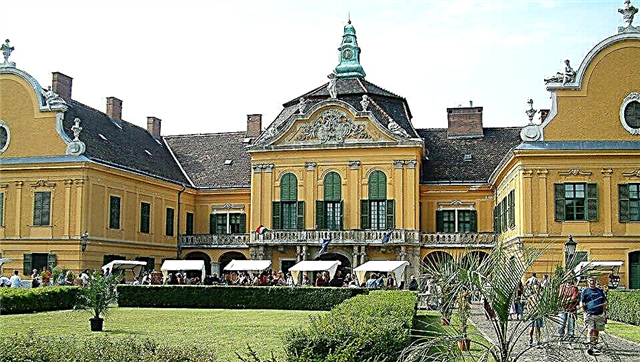
On the southern outskirts of hilly Buda stands the Baroque Nagyteteny Palace, erected in the 18th century. The mansion belonged to the noble family of that time Saraz-Rudnyaski. The halls of the building house the Museum of the History of Furniture and Applied Art. Acquaintance with the exhibits of the Nagyteten Museum significantly enriches the program of a cultural walk around the capital of Hungary.
The manor's magnificent façade is adorned with an arcade gallery, columns and a balustrade. The building is crowned with a domed mansard roof with a high pediment, on which beautiful sculptural compositions are installed. In more than 20 halls of the museum complex, you can see items of antique furniture sets, as well as collections of interior decor details - wall hangings, chandeliers, carpets, art glass, stoves and much more.
Zoo
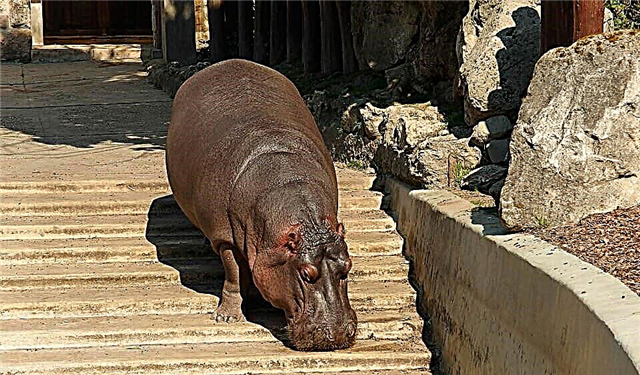
The zoo is one of the oldest institutions of its kind in Europe. The opening of the popular institution took place in 1865. The vast well-groomed area of 11 hectares is divided into separate microclimatic zones, in which numerous thematic pavilions are located. The natural conditions for the habitation of various species of animals have been recreated here. Aviaries are artificial reservoirs, rocks, rainforests, deserts and aquariums.
Zoo visitors have a unique opportunity to see exotic representatives of the fauna. Giraffes, elephants, zebras, hippos, gorillas, lemurs, rhinos, tigers, camels, crocodiles, birds, turtles, reptiles and other animals - all this animal world will leave pleasant memories of itself among zoo visitors for many years.
House of Terror
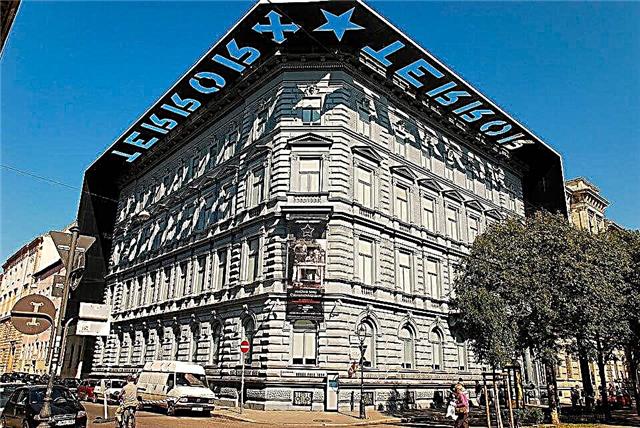
The most famous and most visited street by tourists is Andrássy Avenue. This main artery of the capital of Hungary attracts attention with its architectural ensemble and an abundance of interesting places. One of the old houses houses the Terror Museum, a visit to which reminds of the sad events of the 20th century. The museum is dedicated to the victims of political regimes during the fascist occupation and the communist era. After World War II, the three-story neo-Renaissance building belonged to the Hungarian State Security Administration.
A wide visor stands out on the roof of the building, with a large embossed inscription "TERROR". In sunny weather, the shadow of the letters forms the word on the facade of the building. In the Museum of Terror, you can see prison premises, interrogation rooms, instruments of torture, many photographs of political prisoners and archival documents.
Ruins of Aquincum
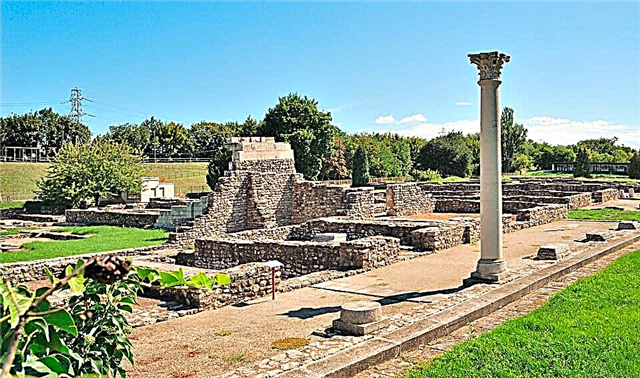
Making a fascinating walk through picturesque places, it is impossible to ignore the Archaeological Park Aquincum. A unique place is the ruins of an ancient city, which was the rich capital of the ancient Roman province of Pannonia. The ruins were discovered in the 18th century during city communications. On the vast territory of the park, among the planted trees, there are well-preserved foundations of buildings, piles of stones, columns, the remains of various buildings with Latin inscriptions and bas-reliefs. In the Roman era, these were public baths, patrician houses, magnificent amphitheaters and other structures.
Most of the facilities are located in the open air. Curious tourists can continue exploring the exposition in the premises of the museum. Its opening took place in 1894. The building houses exhibits that were found during excavations of the ancient city. These are collections of tools, household items, coins, statues, jewelry, pottery and other archaeological items.
Monument to Stalin
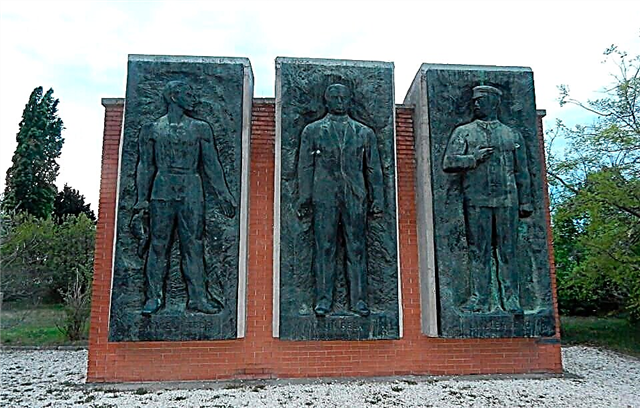
On the outskirts of Budapest there is an interesting park-museum "Memento", where tourists can plunge into the era of the USSR. Sculptural compositions of the socialist period are installed in the open air, which in the old days occupied an honorable place on the streets and squares of the capital of Hungary. The most famous monument of the park, attracting the attention of visitors, is “I. Stalin's boots”.
In 1951, a 25-meter statue of the leader adorned one of the city's parks. The statue was erected in honor of the seventieth birthday of the Soviet ruler. Five years later, during the anti-communist rebellion, the rebellious Hungarians destroyed the majestic Stalin monument. Only his boots remained on the brick pedestal.
Memento Park
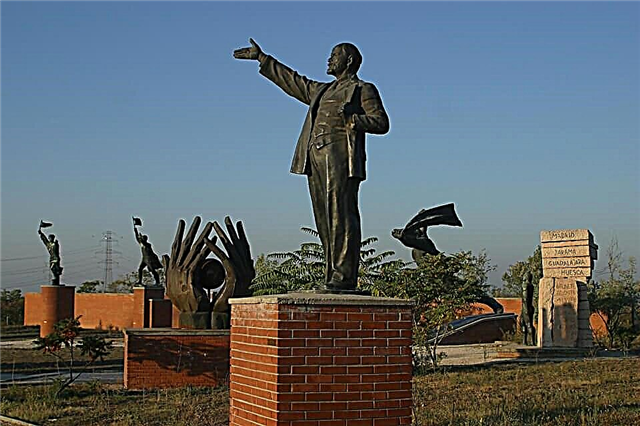
Monuments and sculptural compositions that symbolize the echoes of the socialist era in Hungary have not disappeared without a trace. After the liquidation of the communist regime, numerous monumental attributes of the USSR that adorned the central streets were taken to the suburbs of the capital. The Hungarian authorities have allocated a place where the atmosphere of a dramatic period in the country's history has been recreated. It is a beautifully designed park-museum of Memento, opened to nostalgic Hungarians and curious tourists in 1993.
For a democratic state, such careful keeping of the dismantled fund of the past deserves respect. In the park complex you can see grandiose statues of famous communist leaders of that time, memorial plaques, monuments to the heroes of socialism and various patriotic statues. It is no less interesting to visit the exhibition hall, where documentaries about the history of the USSR are shown.
Cemetery Kerepeshi

The most peaceful attraction in Budapest is the Kerepesi cemetery. Representatives of the Hungarian elite are buried on the territory of a picturesque park complex with shady alleys. These are famous and respected writers, politicians, actors, doctors, artists and other famous personalities. Kerepeshi is more perceived as an open-air museum than a place of sorrow and sorrow. The cemetery-museum is filled with works of architectural art, as well as sculptural compositions saturated with sorrowful emotions.
For some of the deceased, pompous mausoleums and crypts were erected, decorated with domes, columns and various statues. A special impression is made by the place where Soviet soldiers rest. Buried over seven thousand soldiers and officers of the Soviet Army, who died during the liberation of the city from the German invaders.
Great synagogue
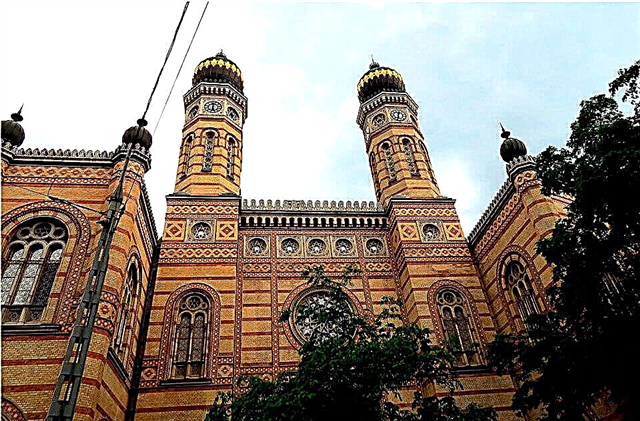
The grandiose synagogue is deservedly considered one of the most beautiful architectural structures in the city. It is the most magnificent symbol of the Jewish people in Europe. The religious institution can accommodate about 3,000 people. The two-story building was built of red and white brick in the best traditions of the Moorish style, which testifies to the Middle Eastern roots of the Jews. The façade of the cult building is decorated with intricate patterned ornaments on the window openings and colored ceramics.
There is a rose stained glass window above the central entrance. The synagogue is crowned with two onion-domed towers and is also decorated with a scalloped roof railing. A memorial park to the victims of the Holocaust is set up next to the complex. Noteworthy is the metal weeping willow. Its pages are engraved with the names of the Jews of Budapest who died during the German occupation.
Franz Liszt Academy of Music
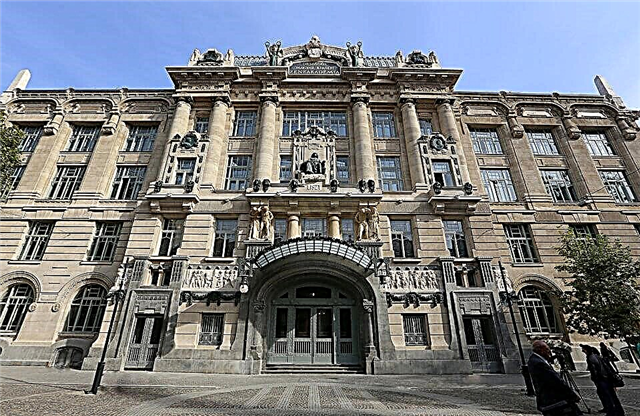
The main music academy and conservatory of Hungary is named after the great composer Franz Liszt. A visit to a cultural institution will give connoisseurs of classical music a lot of pleasant impressions. The Academy is located in a grandiose building, decorated with massive columns and bas-reliefs. Sculptural images of musical figures are installed on the facade of the building.
The interiors of the conservatory are striking in their beauty. The halls and foyer are decorated with luxurious decorative elements. Stained glass, stucco, frescoes, floral ornaments, gilding and natural stones create an unsurpassed atmosphere of pomp. Students' training and concerts are held in rooms with unique acoustics, as well as the best symphony orchestras in the world. Having visited Budapest, the traveler can not only enjoy the ancient city, but also improve his health by visiting the thermal springs.
Special attention should be paid to the panorama of the city overlooking the Danube, as well as UNESCO World Heritage Sites. The city is deservedly considered one of the most beautiful cities in Europe. A variety of architectural styles, perfectly preserved, creates a unique image of the capital of Hungary.




